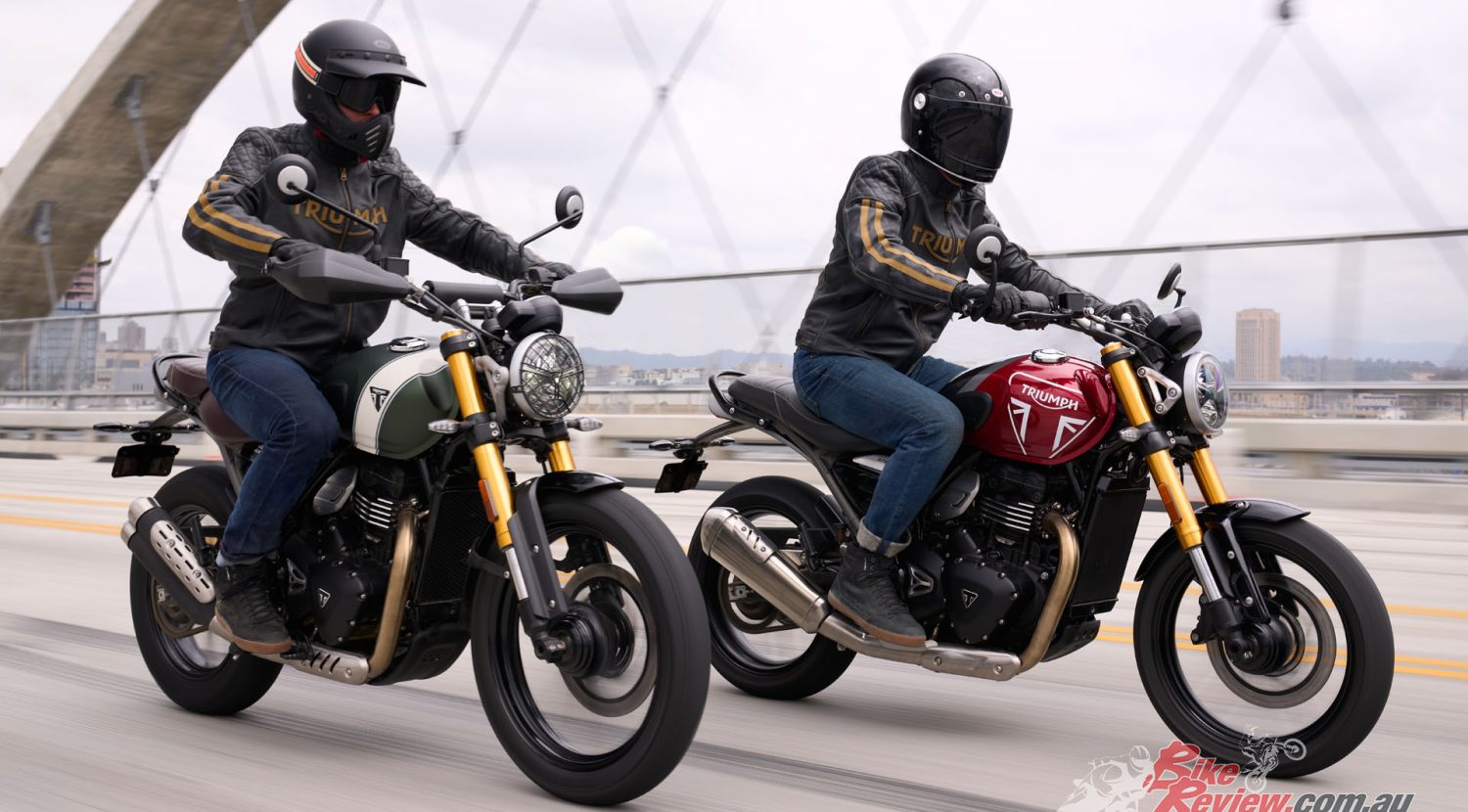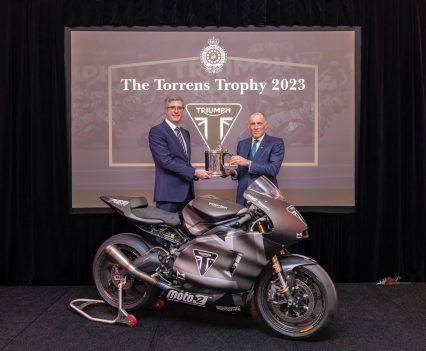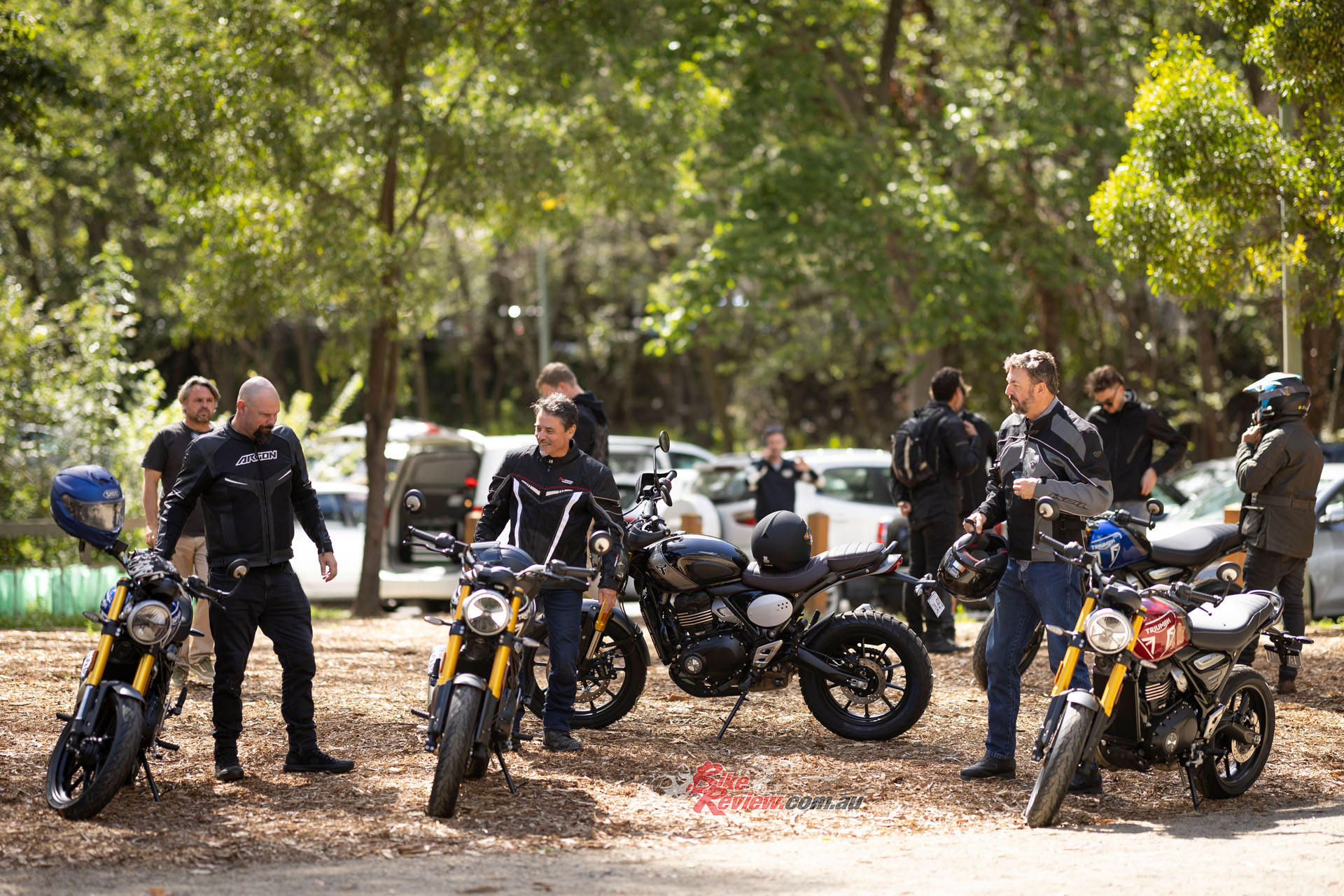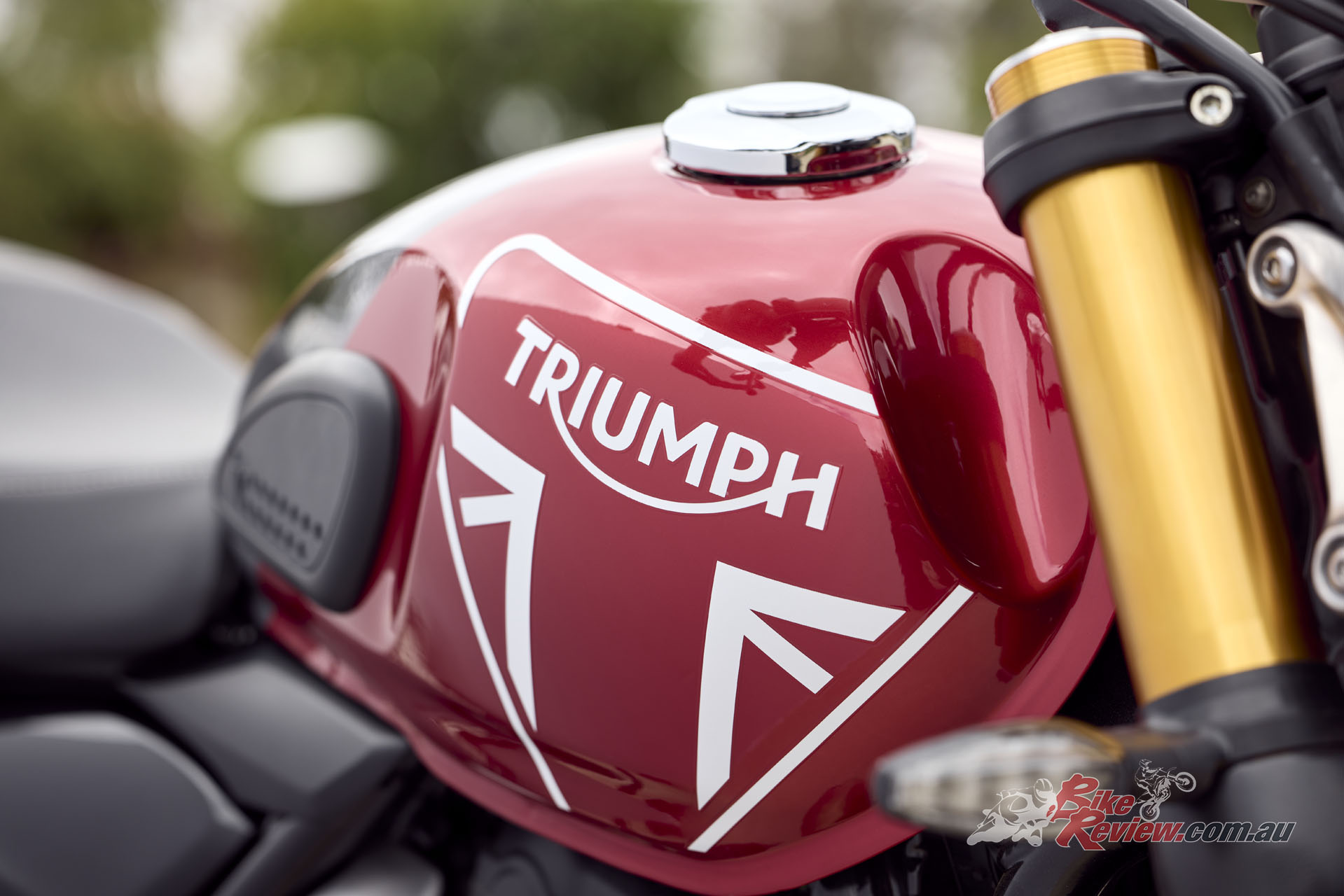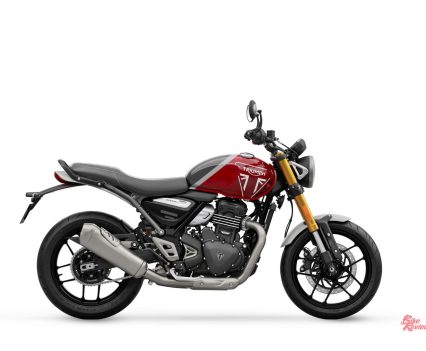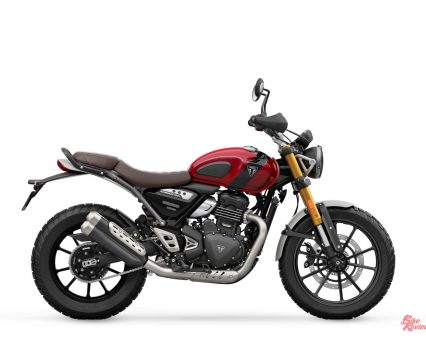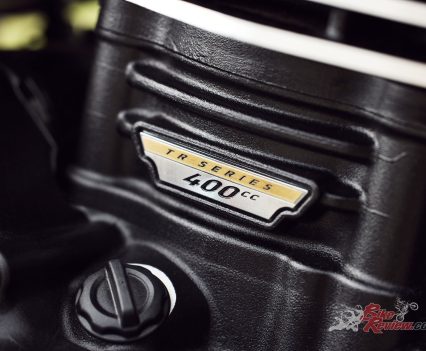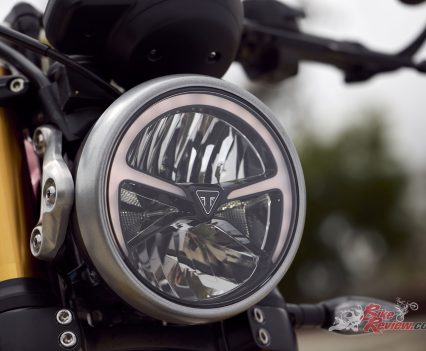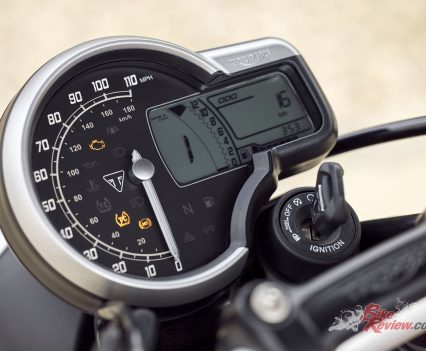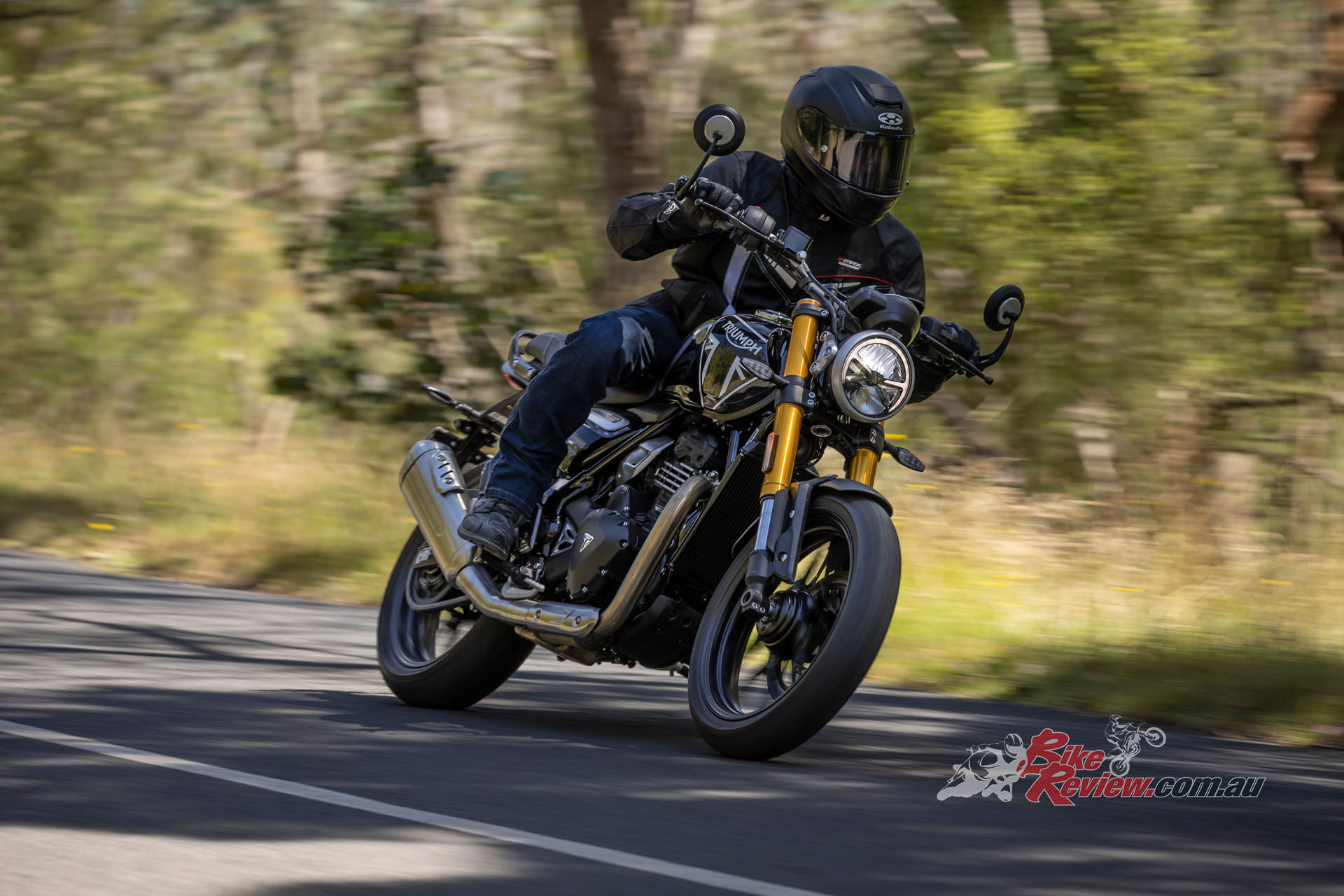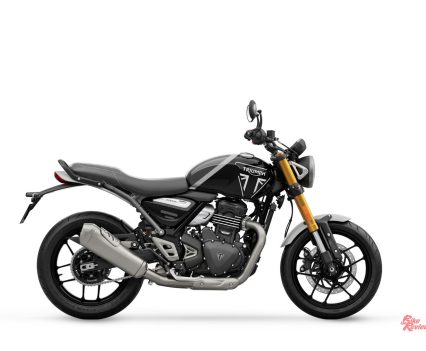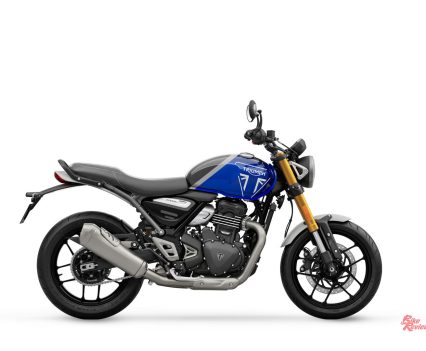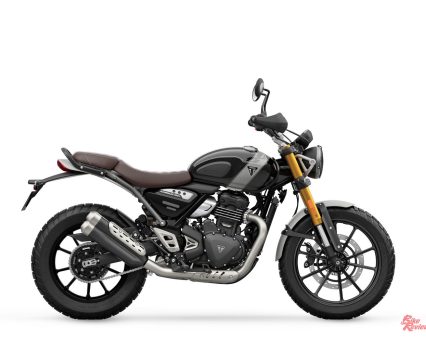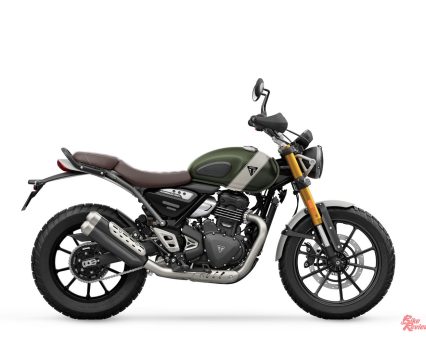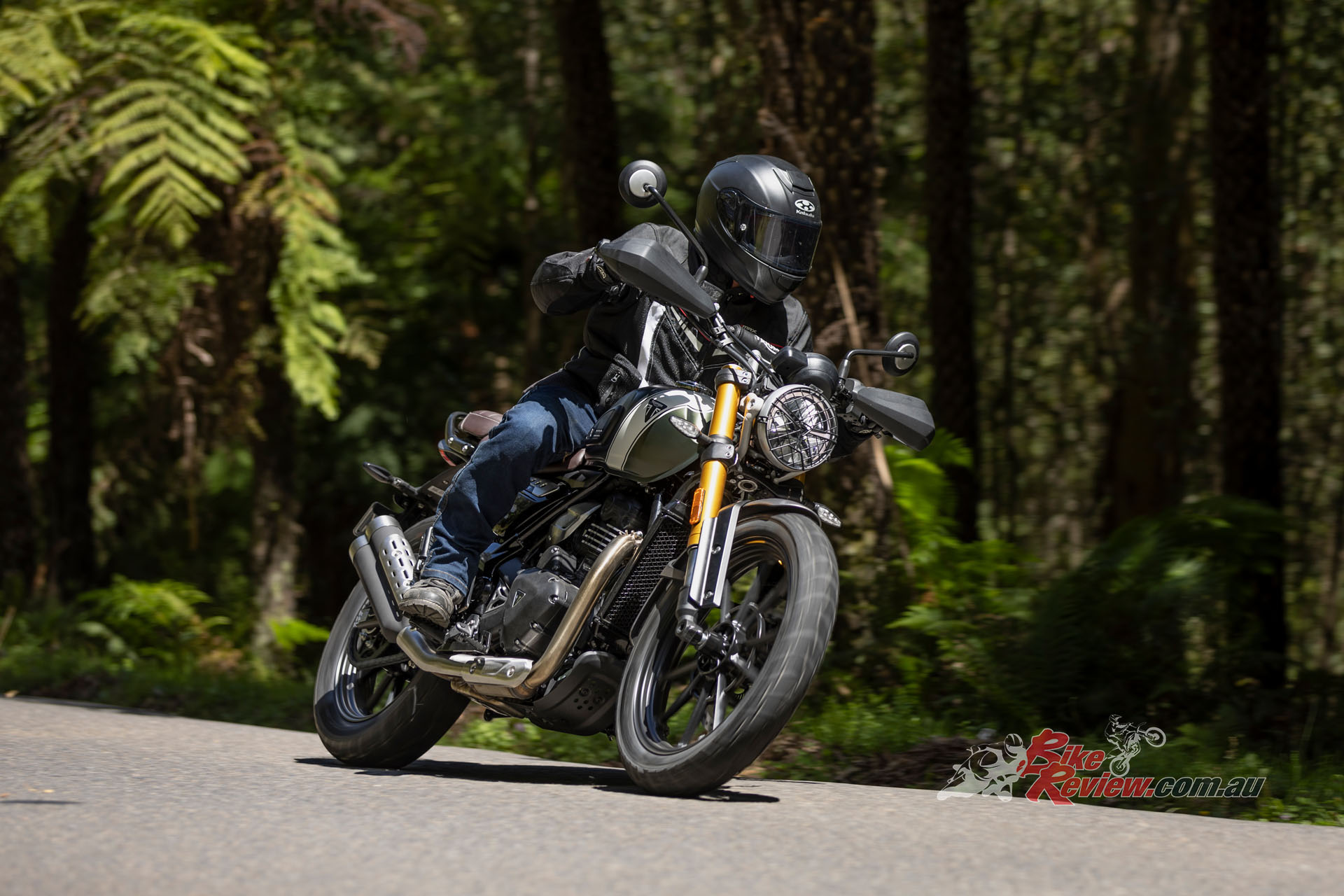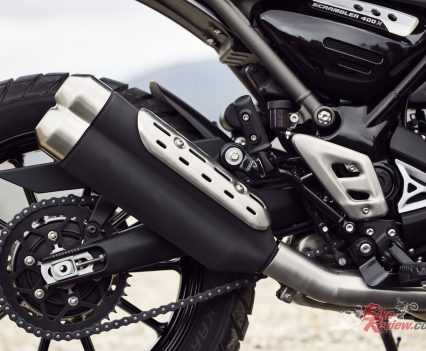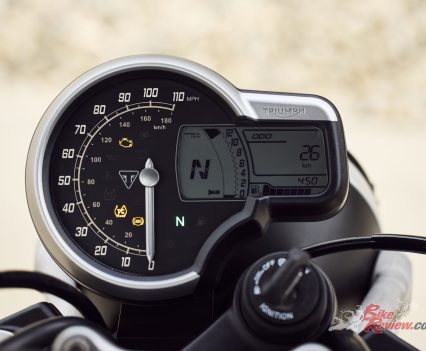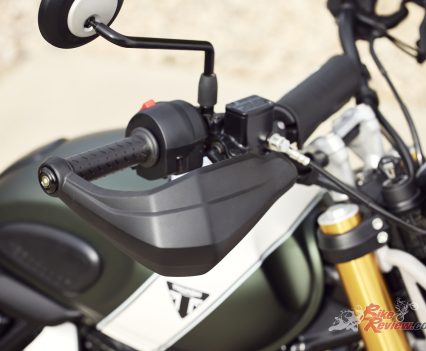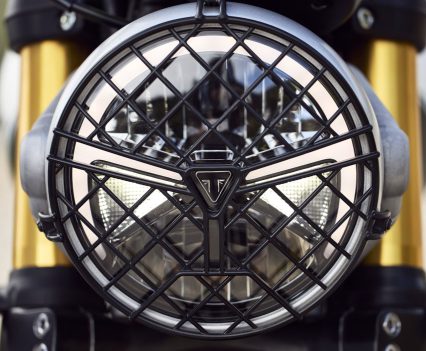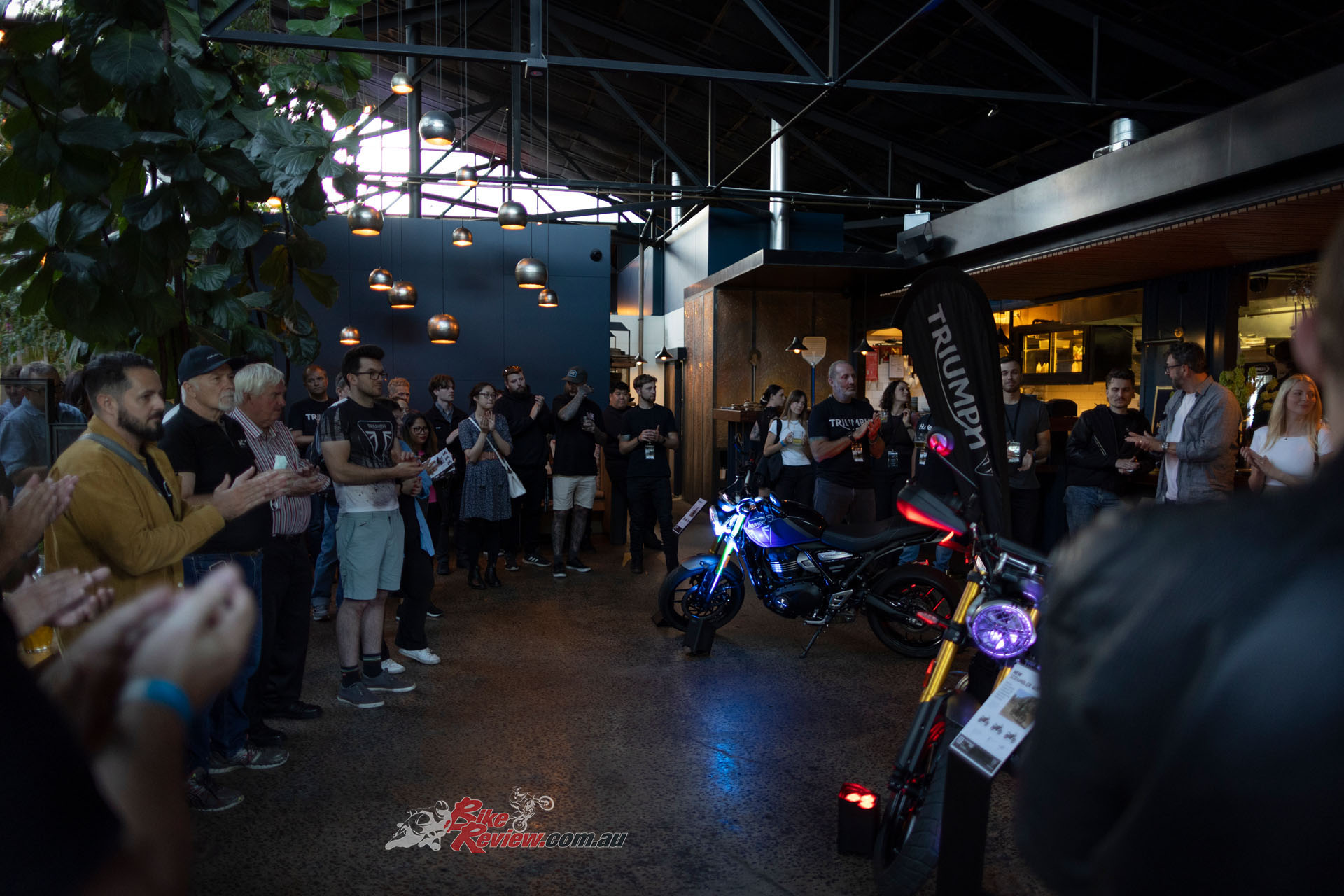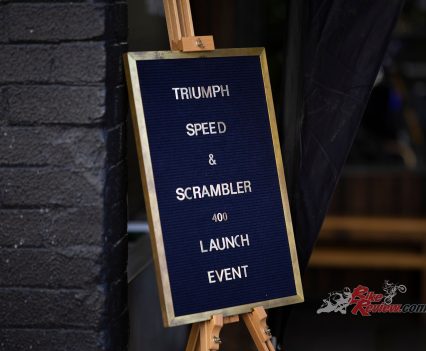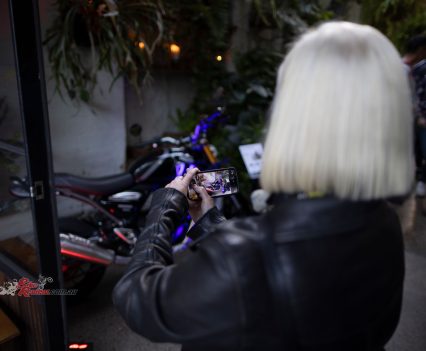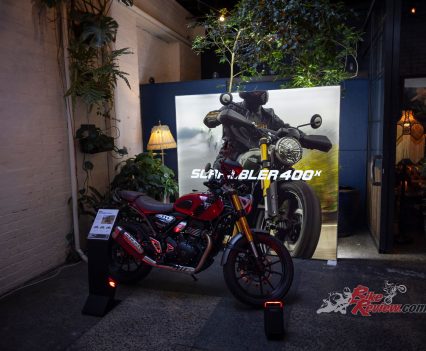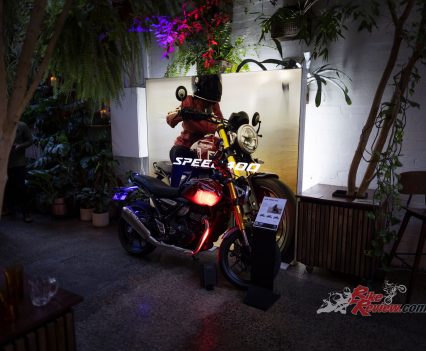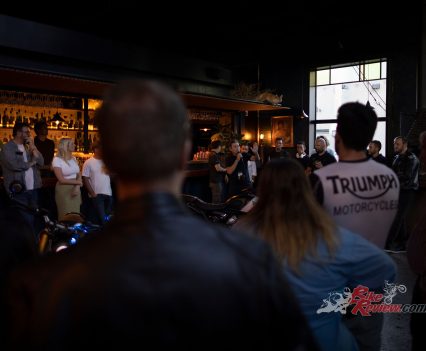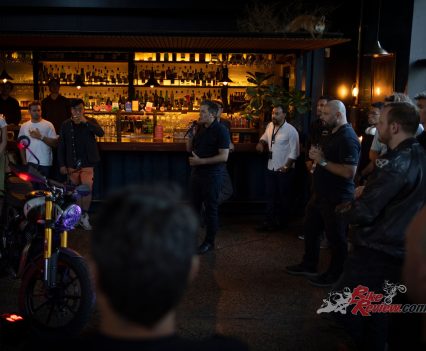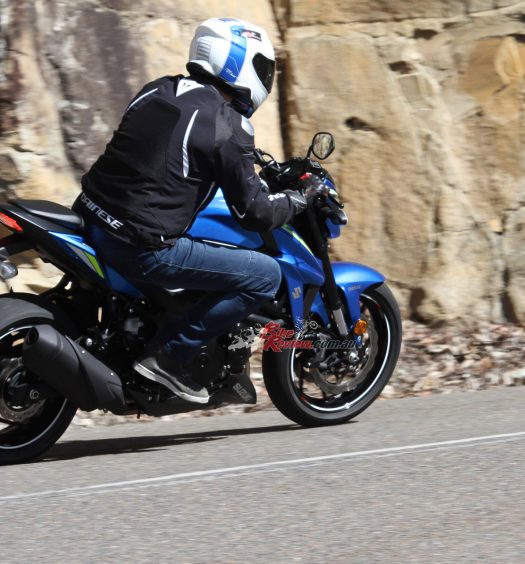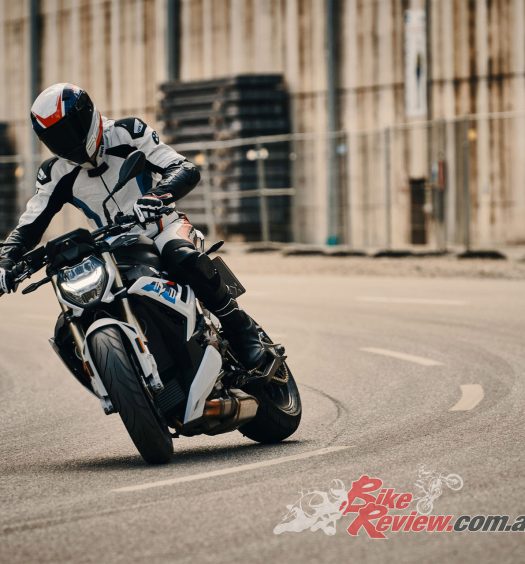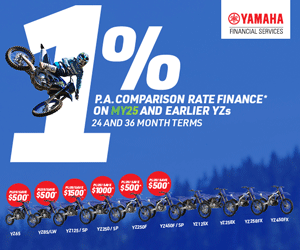We test ride the $8990 ride away Triumph Speed 400 and the $9990 ride away Scrambler 400 X at the Australian media launch. Check out Simon's review of both bikes... Pics: Dean Walters
The new Triumph Speed 400 and Scrambler 400 X models are aimed squarely at further igniting this already explosively competitive motorcycle market segment that includes not only LAMS riders, but also established riders. We head to Melbourne to ride both bikes.
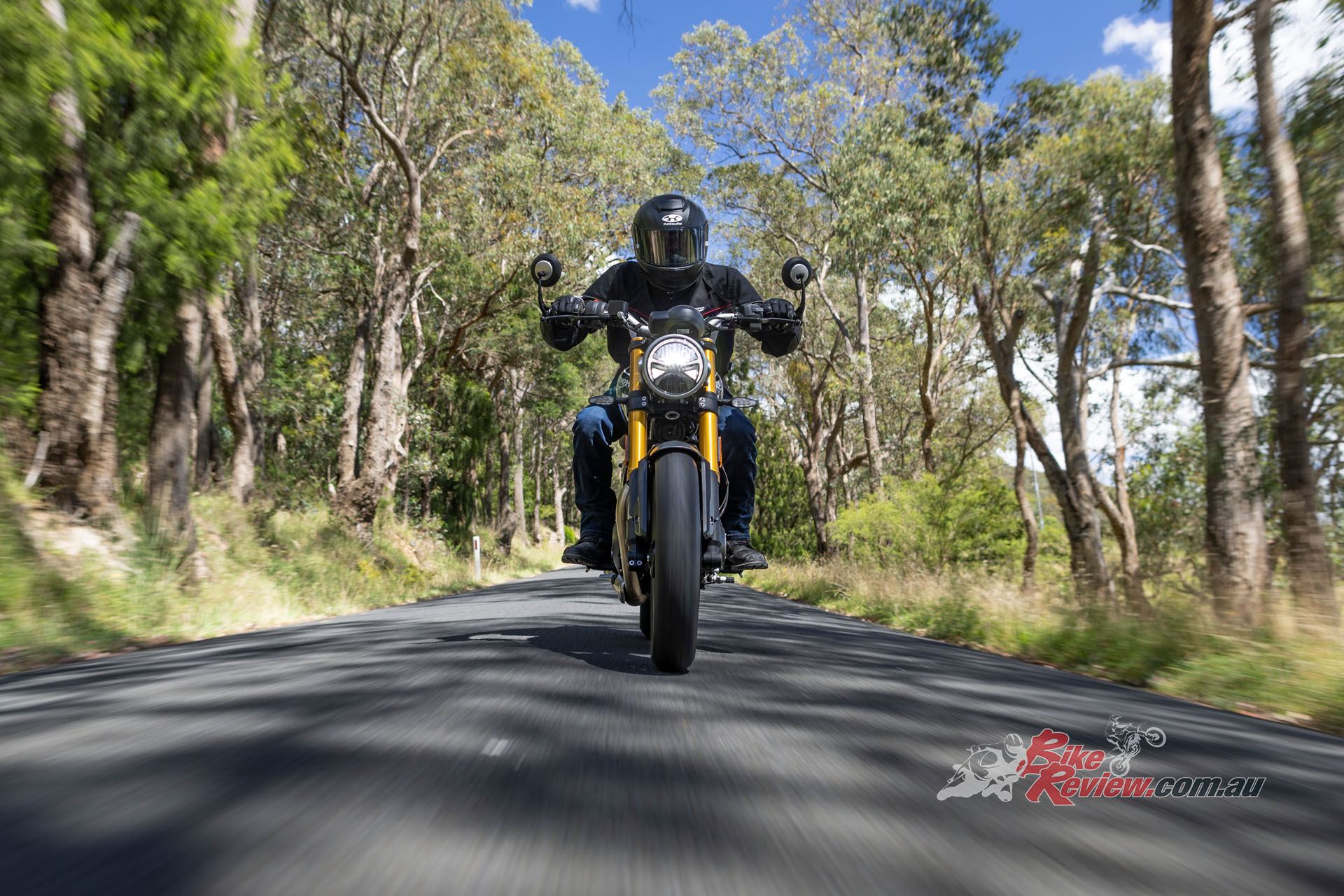
The Triumph Speed 400 costs $8990 ride away, the Scrambler 400 X is $9990 ride away, both are available now.
The experienced riders are those that are seeking an easy to use, satisfying, straightforward and good value for money machine. After spending the best part of a day riding and learning about the Speed 400 and Scrambler 400 X siblings, it’s easy for me to say that there can be little doubt that Triumph have nailed the requisite qualities and are more than ready to do battle…
Read the full technical details on the Speed 400 and Scrambler 400 X here…
Triumph has been around for a long, long time and has an extensive history and proud heritage in competition and engineering. Sadly, and like some other notable European motorcycle manufacturers, the brand has endured some chequered years, with unstable production and poor finances that led it to lapse into administration. That changed forever in 1983, however, when John Bloor, a tycoon of the British building industry and avid motorcyclist, took ownership of the company and provided the impetus, direction, stability and enthusiasm that transformed Triumph from dead duck into the global mega-brand and manufacturing juggernaut it is today.
Fast-forwarding, you see a lot of small capacity bikes out on the streets. The popularity of bikes with smallish, frugal engine capacities, light weight and diminutive dimensions is undeniable. It’s also fair to say that the performance envelope of the current generation of tiddlers is hugely broader than previous generations of bikes with, say, sub-20 ponies on tap and sub-par equipment.
These learner bikes of yore would often curse their riders with a desperate desire to upscale to a bigger bike “as soon as I get off me L’s”. This is no longer the case, and for many riders the inclination to aspire to superbike racer or mile-munching transcontinental mega cruiser at the earliest opportunity is being blurred by the sheer quality and versatility of what you can get between your legs on the lower rungs of the motorcycle ladder.
Triumph know markets, which is why it is producing almost 100,000 bikes a year, with a model range that spans the gamut of riding personalities from hooligan to business executive to retro-ist to desert explorer to bully boy and now, to all those that are new to the riding game but have an affinity with the Triumph marque. You are being counted and welcomed to the Union Jack fray.
Read our feature on visiting the Triumph Hinkley Factory here…
The Speed and Scrambler X were both designed in the UK engineering headquarters in Hinckley, with the aim being to manufacture overseas and hit a sweet spot between cost, quality, performance, reliability and style that would not compromise the Triumph brand in any way, but rather enhance it. Perhaps utilising remnant colonialism, the Bajaj Auto factory in India was chosen to build the bikes based on its own reputation for quality and after extensive factory quality testing and collusion with Triumph engineers.
Within an hour of touch-down at Tullamarine, the bike press invitees, some red-eyed and weary, were gathered in a hotel car park and gearing up for a first ride, the coffee drips barely having time to dry on the chin. Beggars cannot be choosers and I steel myself then throw a leg over the nearest Speed 400. First impression is the sheer size (or lack thereof) – small, low and wieldy, with a super light and manoeuvrable feel and feather light controls.
“The piston reciprocation is so well balanced that it feels and sounds like a twin and is completely devoid of single-cylinder vibrations”.
SPEED 400
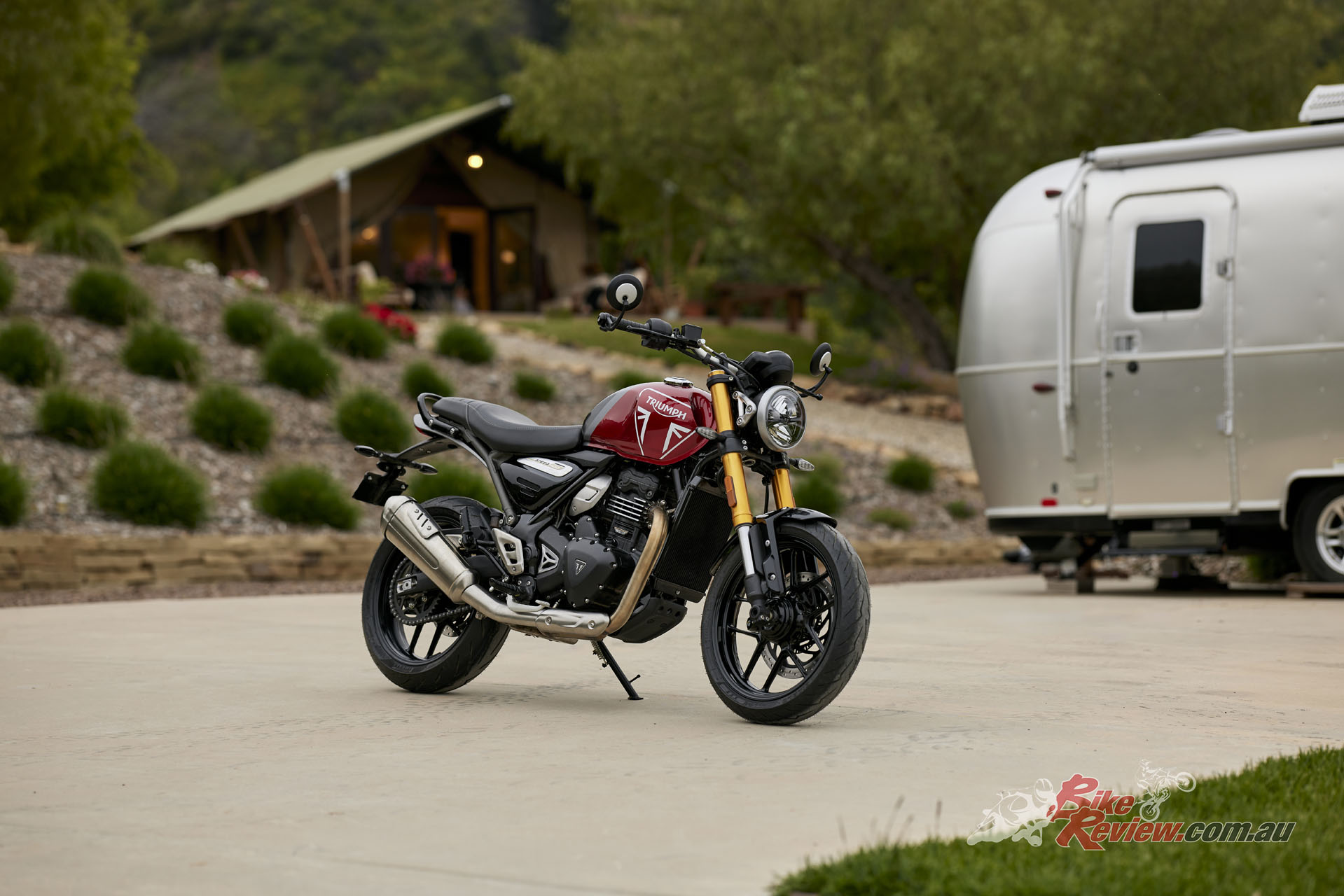
The traction control system on both models is switchable with a simple on or off selection, so the rider can quickly and easily deactivate the intervention.
Gradually, the engines are spun into life and the single-cylinder idle grows into a roar in the concrete cavern before we follow the leader and head out onto the cool and bright Melbourne city streets. The bike I am on is barely 100km into its life. The throttle, a ride-by-wire interpretative type, feels a bit snatchy / unpredictable at times in the sludge of city traffic as is that often oh so important change up from first to second. This is likely because of newness and a lack of any bedding-in time for those bits that need it. Once we start cruising out onto the motorway sections and begin to stretch the legs a little, the whole plot feels smoother and eminently comfortable.
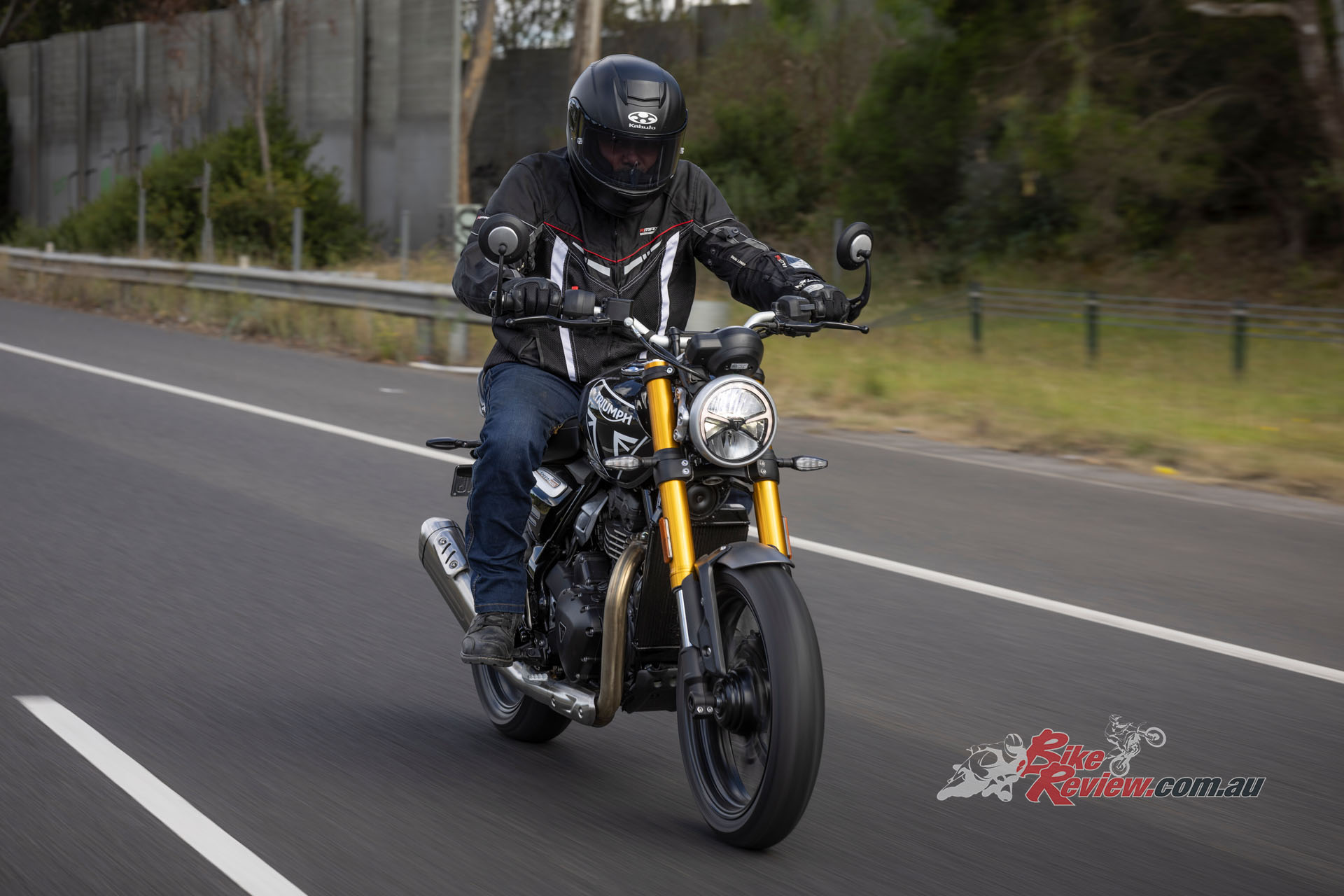
“Once we start cruising out onto the motorway sections and begin to stretch the legs a little, the whole plot feels smoother and eminently comfortable.”
The over-square single cylinder motor is bloody smooth. In fact, the piston reciprocation is so well balanced that it feels and sounds like a twin and is completely devoid of single-cylinder vibrations. The motor is also, conversely to some other singles, lively and very eager to spin up to its rev limit. The engine is an all-new ground-up design, however, we have it on good authority that it shares some similarities with the 1200 RS triple engine, sans the two far cylinders.
It would be silly to ignore existing elements of design that continue to prove successful, wouldn’t it? A glance at the power and torque curves provides ample evidence of how this bike is likely to behave, with the torque graph showing a friendly flatness that animates into a responsive and yet flexible and forgiving powerplant. The nature of which, when married to a light-shifting six-speed gearbox and two-finger clutch, is a jolly friendly one.
The Speed is immediately comfortable. The seat is quite sumptuous, and the rider triangle is easy to live with. All controls are light and easy to understand, except I don’t get the mini-tacho, which took me some time to identify as it looks a like a fuel gauge. The bevy of bike press ranged considerably in terms of size and mass, but no-one mentioned any discomfort. I would say that most seemed pleasantly surprised. Speed coolness is highlighted by all manner of subtle and not so subtle cues such as the bar-end mirrors, badging, air-cooled (it is water-cooled though) engine look, deeply scalloped fuel tank, removable pillion peg hangers, and the upswept exhaust. It really looks the shizz.
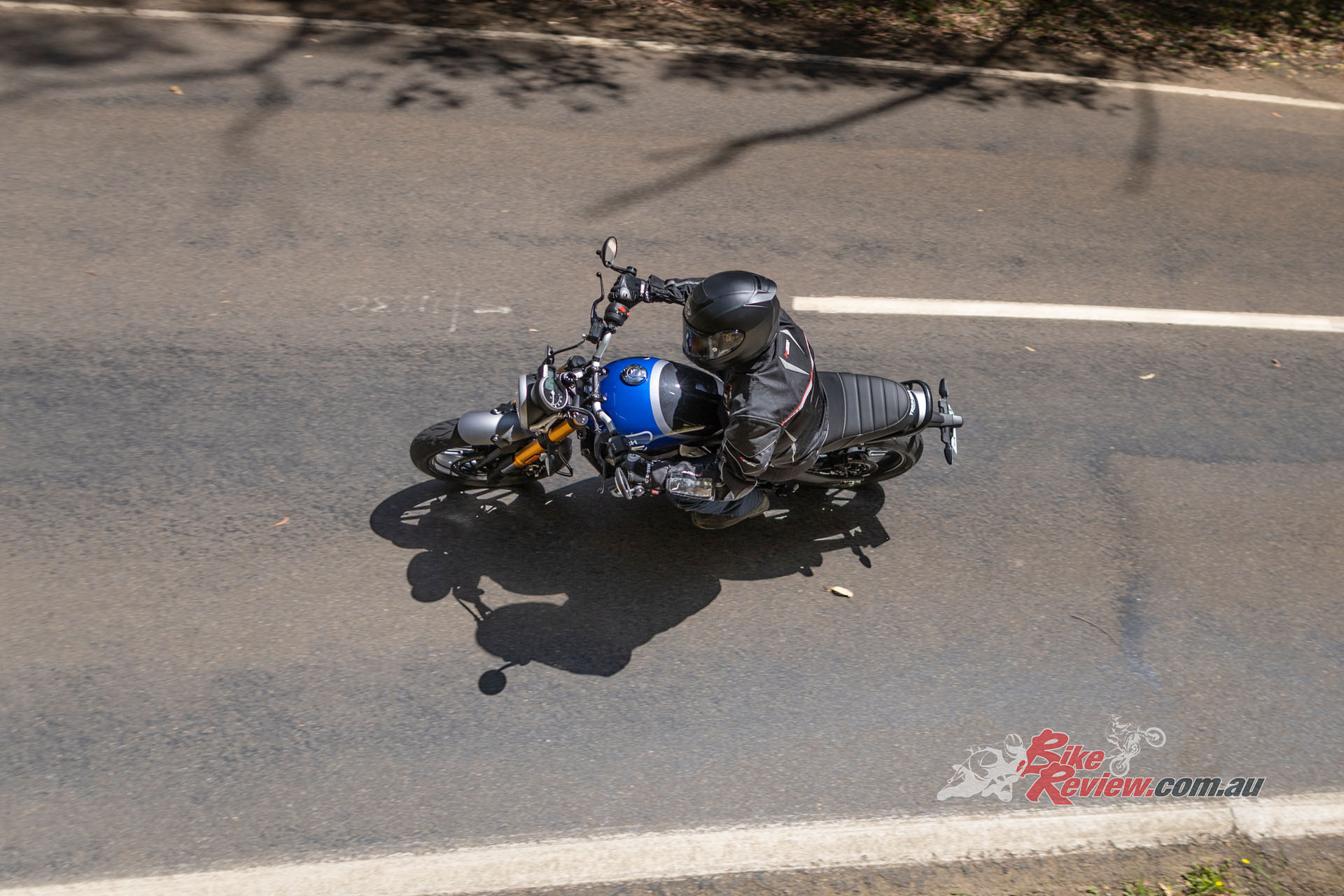
“The front-end is whippy and allows for easy line changes whilst offering good stability and a pretty compliant ride that is also stable under brakes.”
Out on unknown backroads, we got a bit more dynamic action in due to crazy road cambering, variable surfaces and, of course, ruts and bumps to test and trial any suspension. The Speed was not easily unsettled, benefitting from its relatively compliant suspension and a chassis that is able to right itself quickly after being subject to road shock therapy.
The high-spec tyres help here, too. The front-end is whippy and allows for easy line changes whilst offering good stability and a pretty compliant ride that is also stable under brakes. The single disc and four-pot radial mount caliper are well matched and did not show any signs of fatigue during the riding. The rear brake proved to be highly suitable to trail braking use that you could notice tightening the bike’s cornering radius.
“Pulling new riders to a brand requires not just models of dreamy aspiration, but to get fans in from their first ride and to [hopefully] continue the journey together”.
SCRAMBLER 400 X
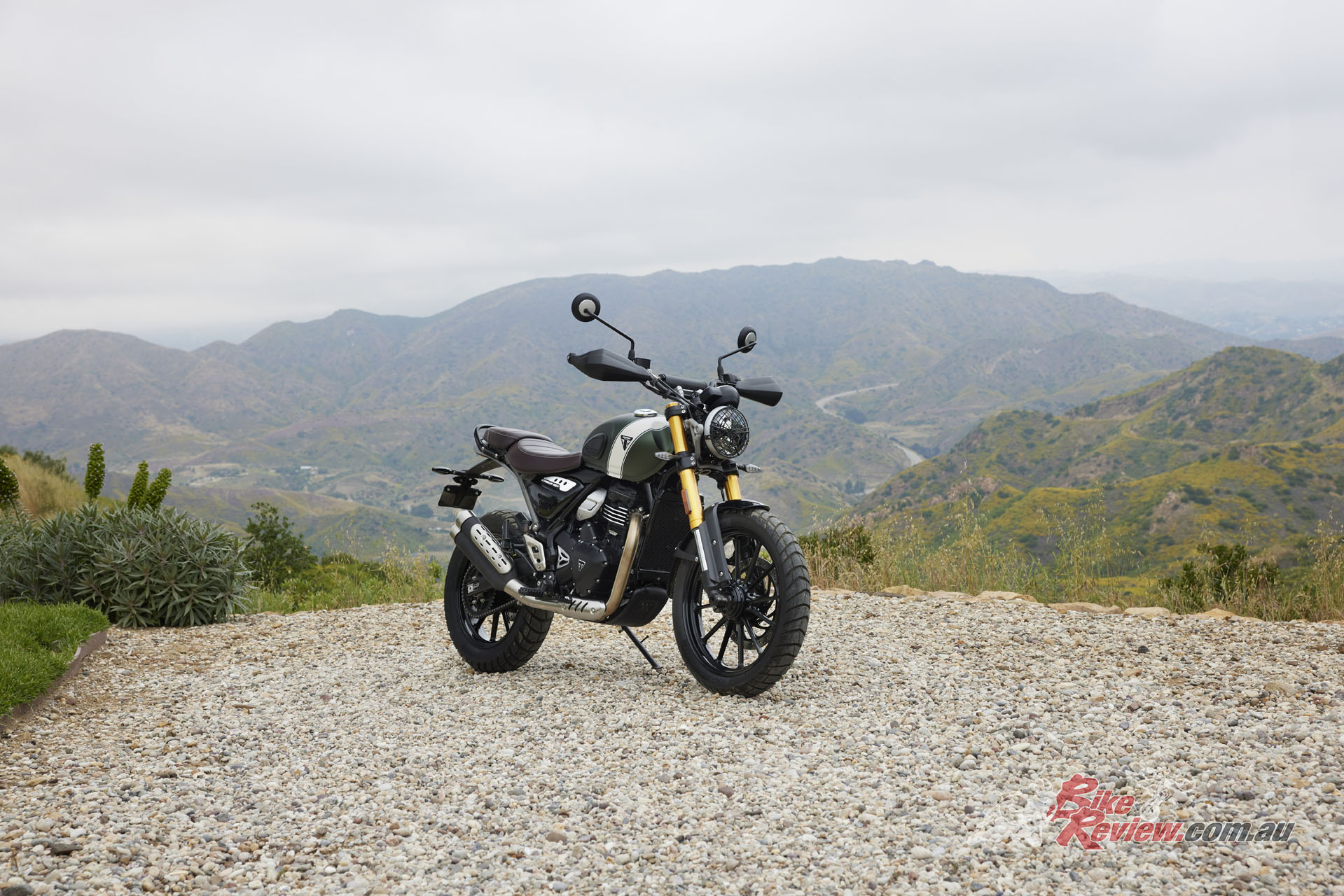
the Scrambler 400 X has more suspension travel, bigger brakes and a 19in front wheel, plus hand guards and more.
Following the incredulousness of a beerless lunch at a brewery, we did some bike swapping and I got to ride the Scrambler. The road was a choice piece of twisty tarmac that made me initially wished to have been on the Speed. The Scrambler, though, is totally competent in this terrain also. The bike I rode had almost 1000km on the clock and its engine felt looser and livelier than the earlier Speed. Any reservations about a 19in front and semi-dual purpose tyres I may have had dissipated quickly in the sunshine and curve of the road ahead. The Scrambler (and Speed) showed great eagerness in not only approaching and traversing each corner, but also how it wanted to exit them; with surprising gusto.
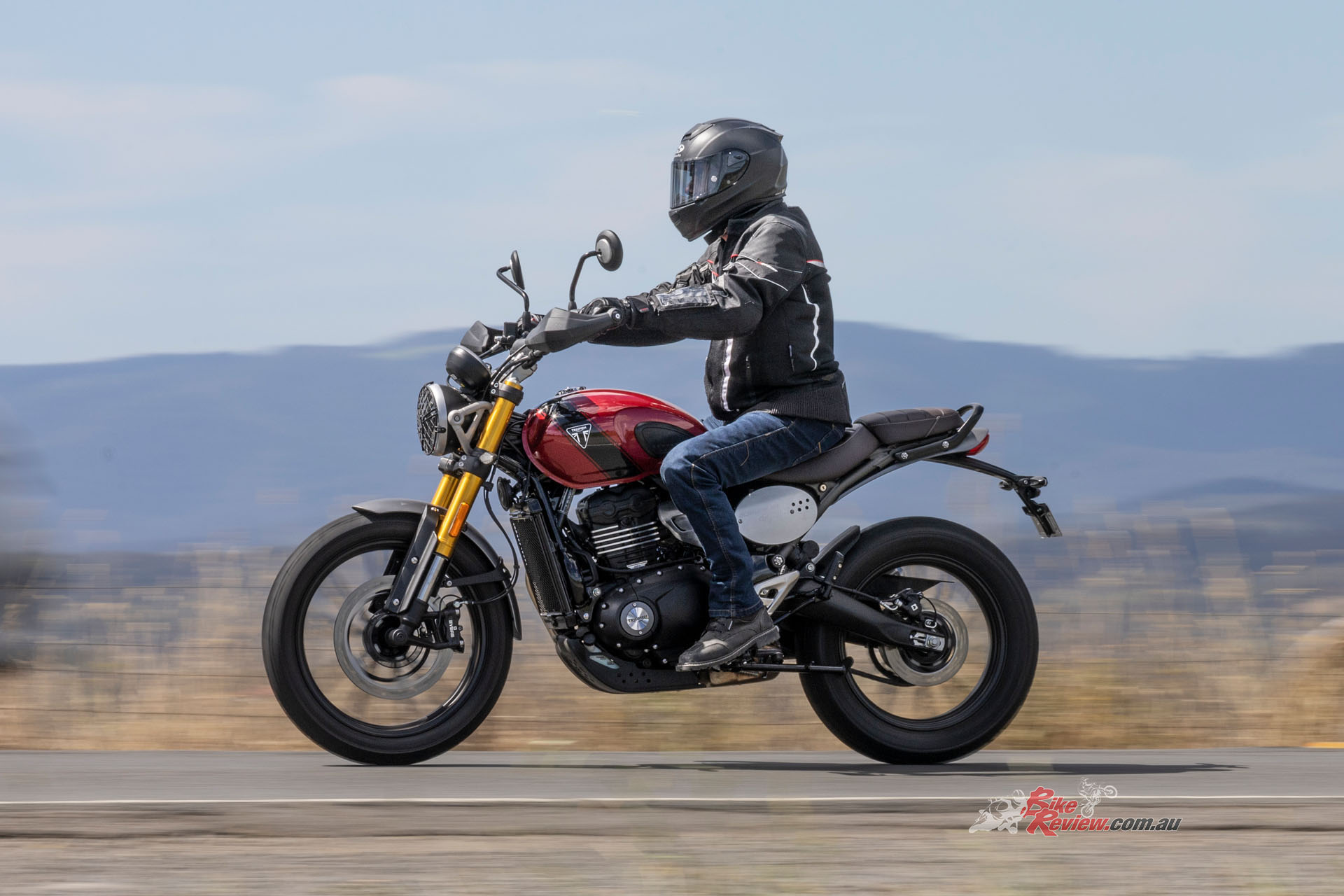
“Any reservations about a 19in front and semi-dual purpose tyres I may have had dissipated quickly”.
The Scrambler X is distinctly different from the Speed and really provides a great option for your intended motorcycle lifestyle. Meaningfully different in terms of bigger brakes, longer travel suspension, off-road wheels/tyres and many off-road features, such as sump and radiator guards, steel foot controls and hand protection. That said, the Scrambler X performed great on the road and despite the myriad differences between it and the Speed, also quickly created a high level of comfort and confidence.
Both models weigh in under 180kg wet, which is significantly lighter than some competitors. Closer inspection reveals high levels of quality and detail that absolutely belie the price tag (Speed – $8990 ride away / Scrambler X – $9990 ride away). There is plenty on offer other than the clean lines, pleasant sound, and solid performance – ABS (can be deactivated on Scrambler), traction control (switchable), torque-assist clutch, engine friction reduction technology, 16000km service intervals, analogue-digital dash with functions, LED lighting – the list is extensive and should be checked out.
Pulling new riders to a brand requires not just models of dreamy aspiration, but to get fans in from their first ride and to [hopefully] continue the journey together. It makes sense to do this considering motorcycling creates brand bias that can be life-long. Triumph wanted to build a bike that would be much more than a re-badged low-cost machine. It needed to build a bike with sophistication, high build quality, reliability, competitive or better performance; a bike that would not intimidate its rider but still offer dynamic performance and practical flexibility by being easy to use. A bike that would not dilute the Triumph brand at all.
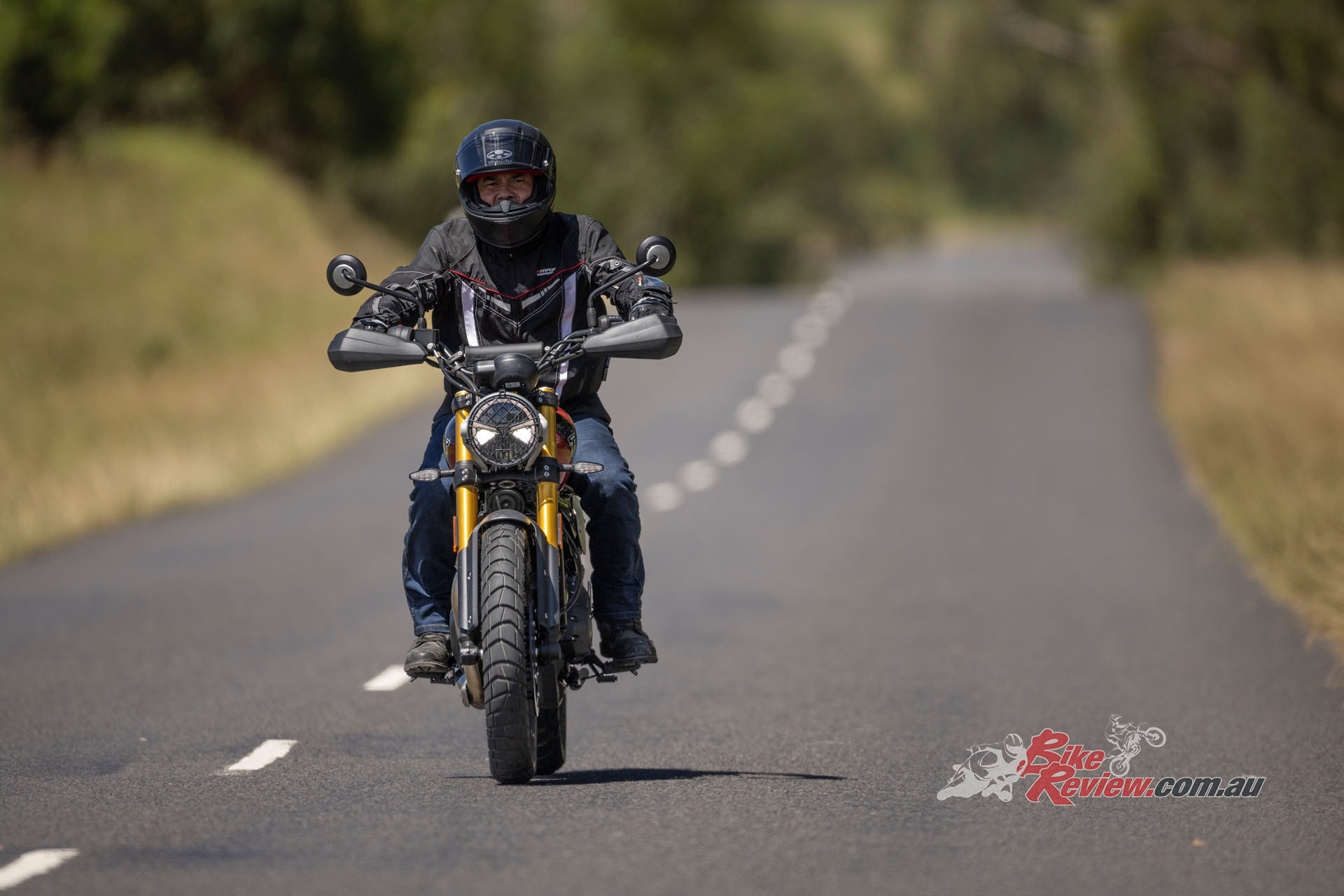
Well done to Triumph on a cracking job for bikes that may well prove highly influential to new riders and the small-mid capacity market.
The Speed 400 and Scrambler 400 X are not throw-away bikes by any stretch of the imagination. They actually latch onto the imagination and will, I am sure, make great partnerships with riders of all ages, types and experience. The two new Trumpies may well disrupt the market as it currently stands based on performance vs price vs features vs versatility – time will tell. Well done to Triumph on a cracking job for bikes that may well prove highly influential to new riders and the small-mid capacity market.
Triumph Speed 400 (Scrambler 400 X) Specifications
Price: $8990 R/A ($9990 R/A)
Warranty: two-years unlimited km
Colours: Phantom Black, Carnival Red, Capian Blue (Phantom Black and Silver Ice, Matt Khaki Green and Fusion White, Carnival Red and Phantom Black)
Claimed Power: 29kW@8000rpm
Claimed Torque: 37.5Nm6500rpm
Wet Weight: 170kg (179kg)
Fuel capacity: 13L
Engine: Liquid-cooled, DOHC, four-valve single-cylinder four-stroke, 89 x 64mm bore x stroke, 12:1 compression ratio, Bosch EFI, six-speed gearbox, wet multi-plate Torque-Assist clutch, stainless-steel silencer.
Chassis: Mild steel hybrid tubular frame with bolt-on sub-frame and alloy swingarm
Rake: 24.6° (23.2º) Trail: 102mm (108mm)
Suspension: 43mm inverted forks, 140mm (150mm) travel, monoshock rear, 130mm (150mm) travel
Brakes: 300mm (320mm) rotor and single four-piston radial-mount caliper (f), 230mm rotor and single-piston caliper (r). ABS (Switchable).
Wheels & Tyres: Cast alloy 17in x 3.00in and 17in x 4.00in, 110/70 –17, 150/60 – 17. (Cast alloy 19in x 2.50in and 17in x 3.50in, 100/90 – 19, 140/80 – 17).
Dimensions:
Wheelbase: 1377mm (1418mm)
Seat height: 790mm (835mm)
Ground clearance: N/A
Overall Length: N/A
Overall Width: 795mm (825mm)
Overall Height: 1075mm (without mirrors) (1190mm)
Instruments & Electrics: Analogue speedo with integrated LCD display, ABS, Traction control, LED lights, USB-C point, Immobiliser.
Editor’s Note: If you are reading this article on any website other than BikeReview.com.au, please report it to BikeReview via our contact page, as it has been stolen or re-published without authority.


